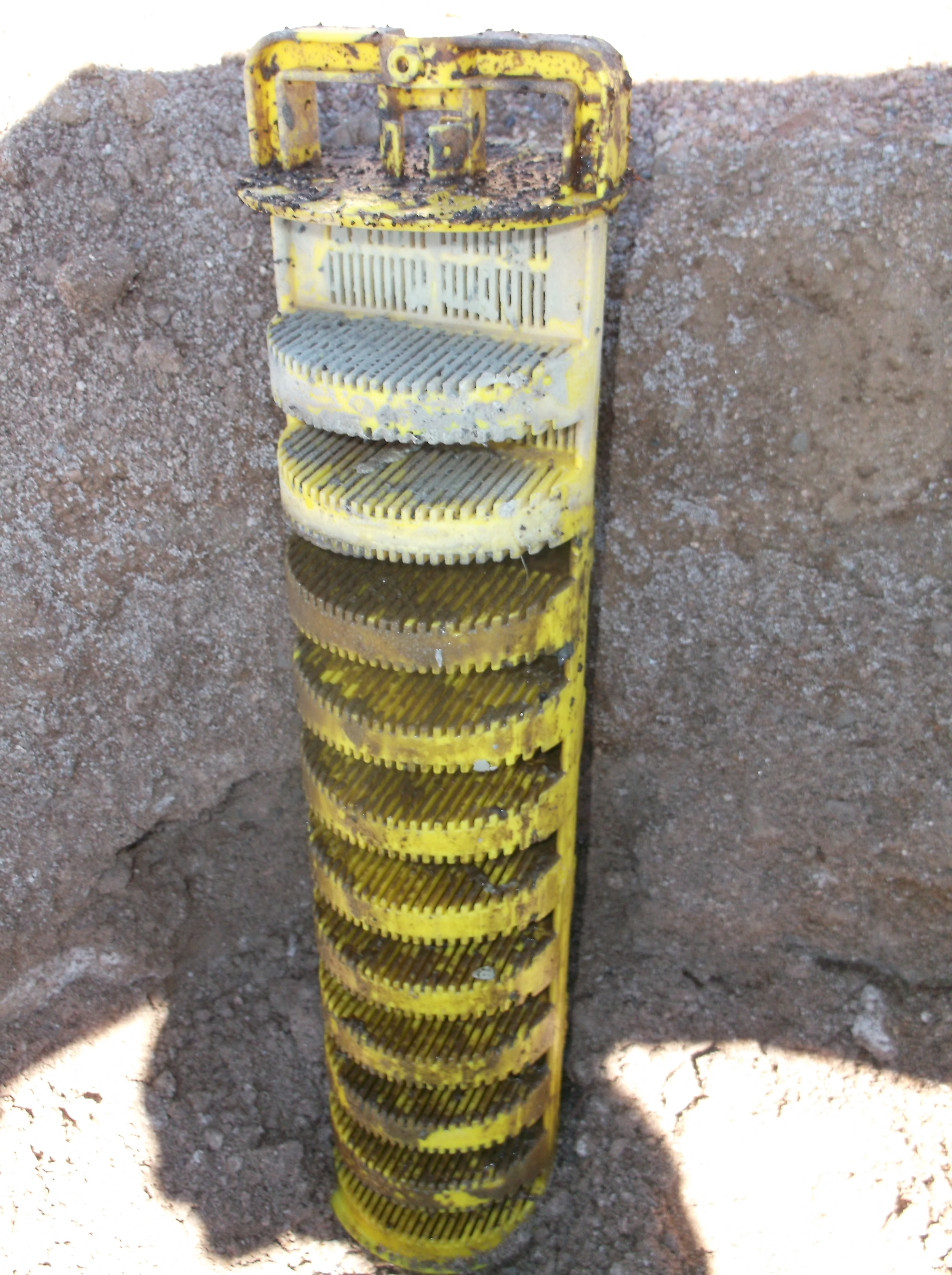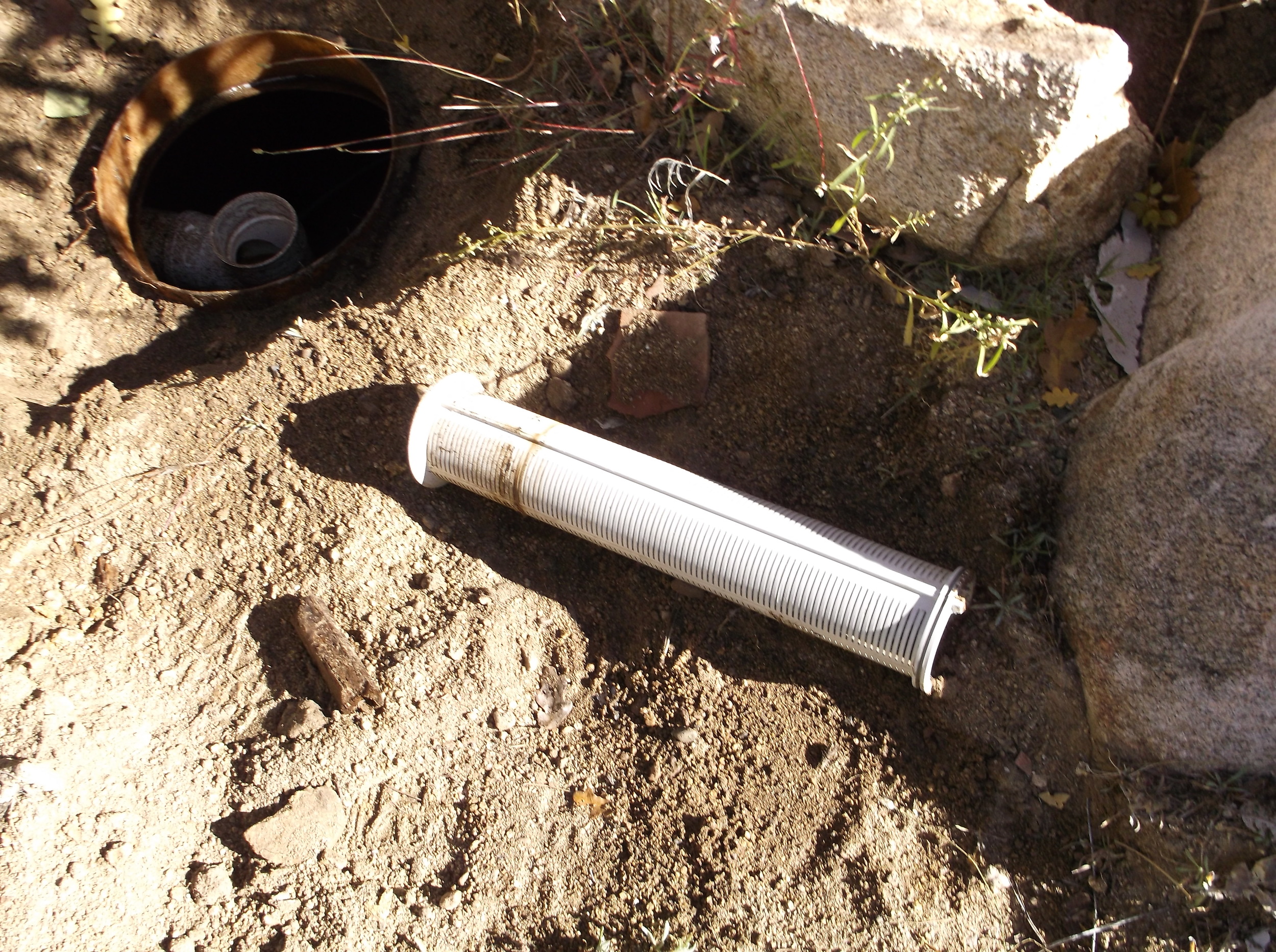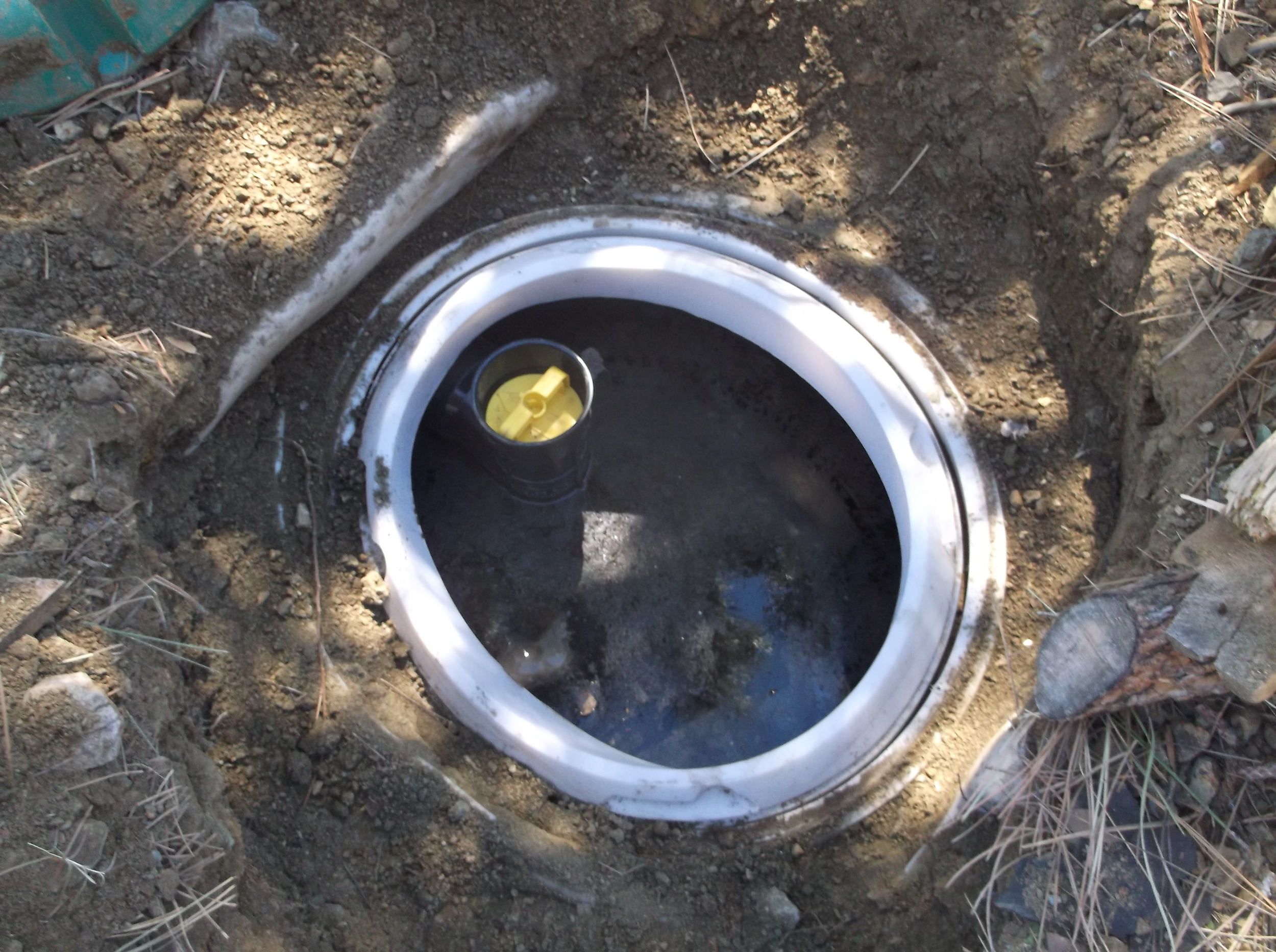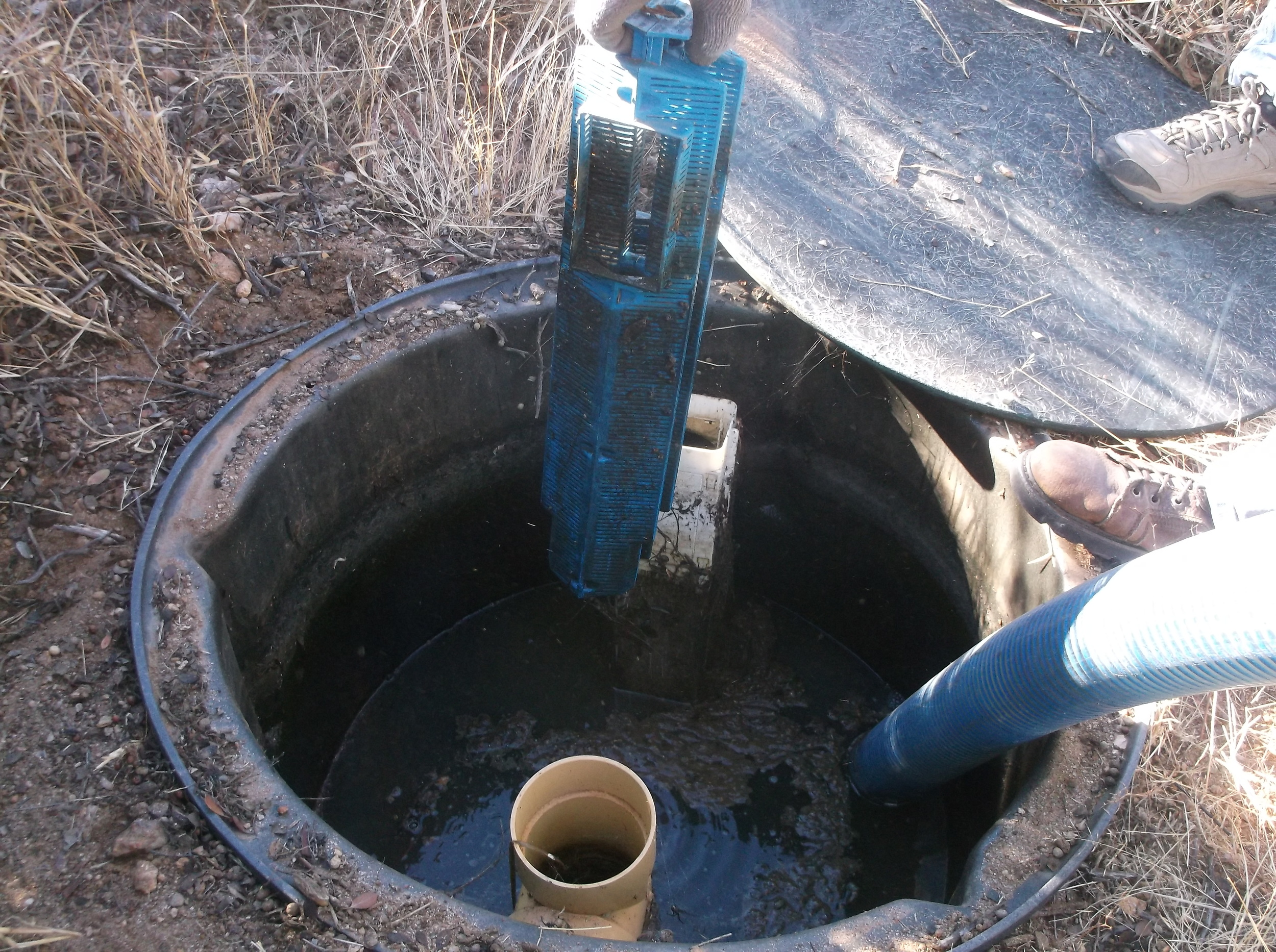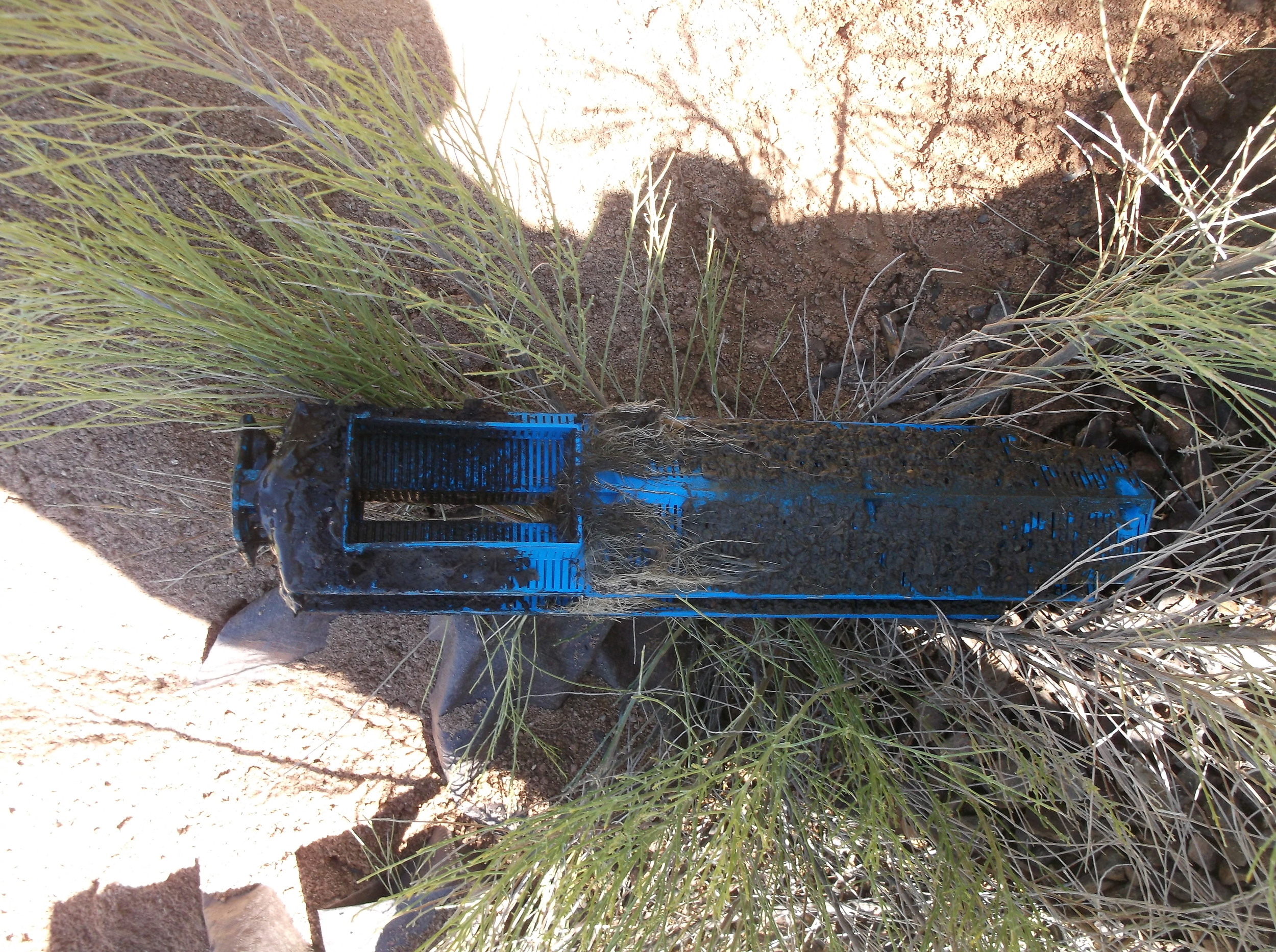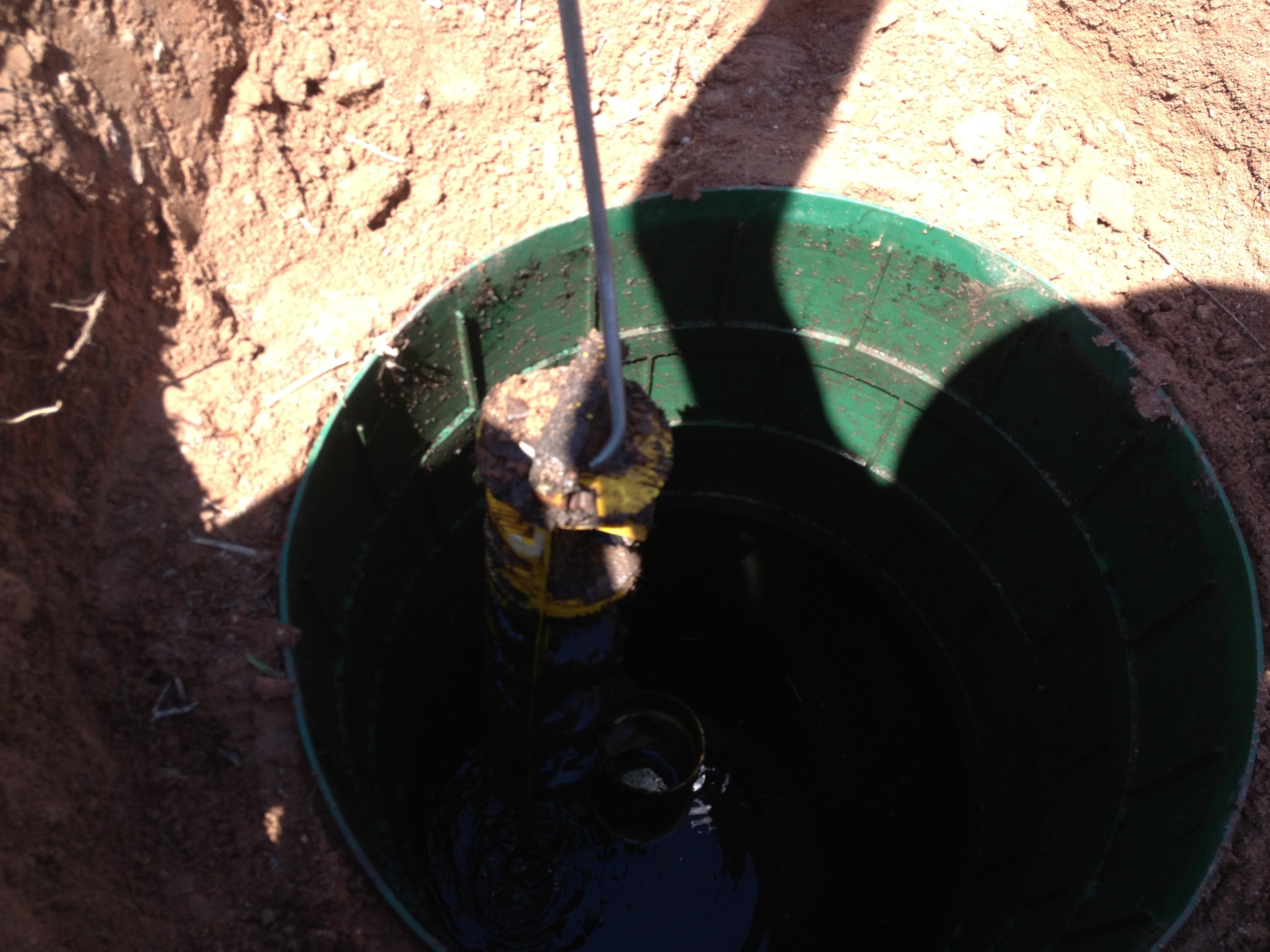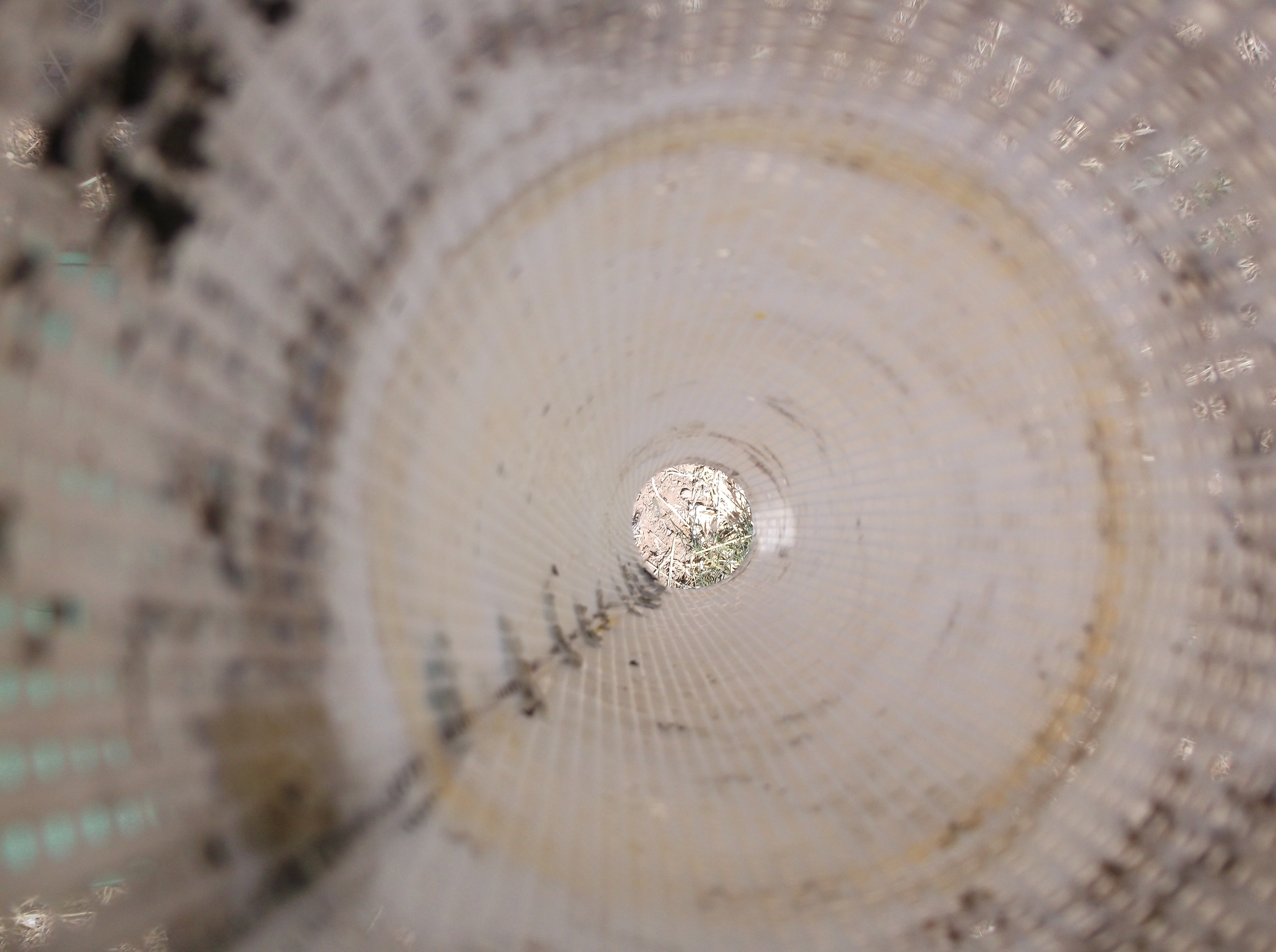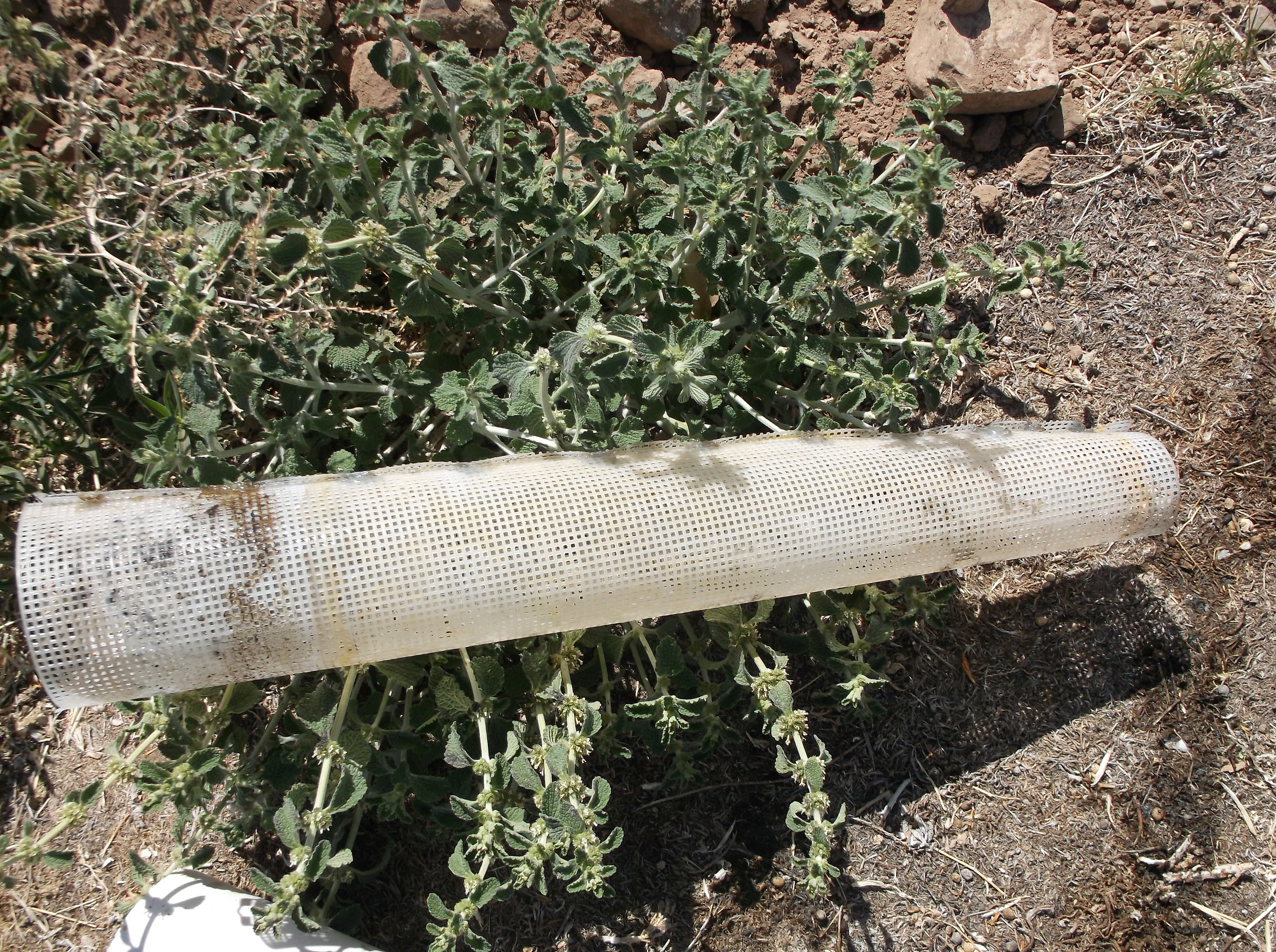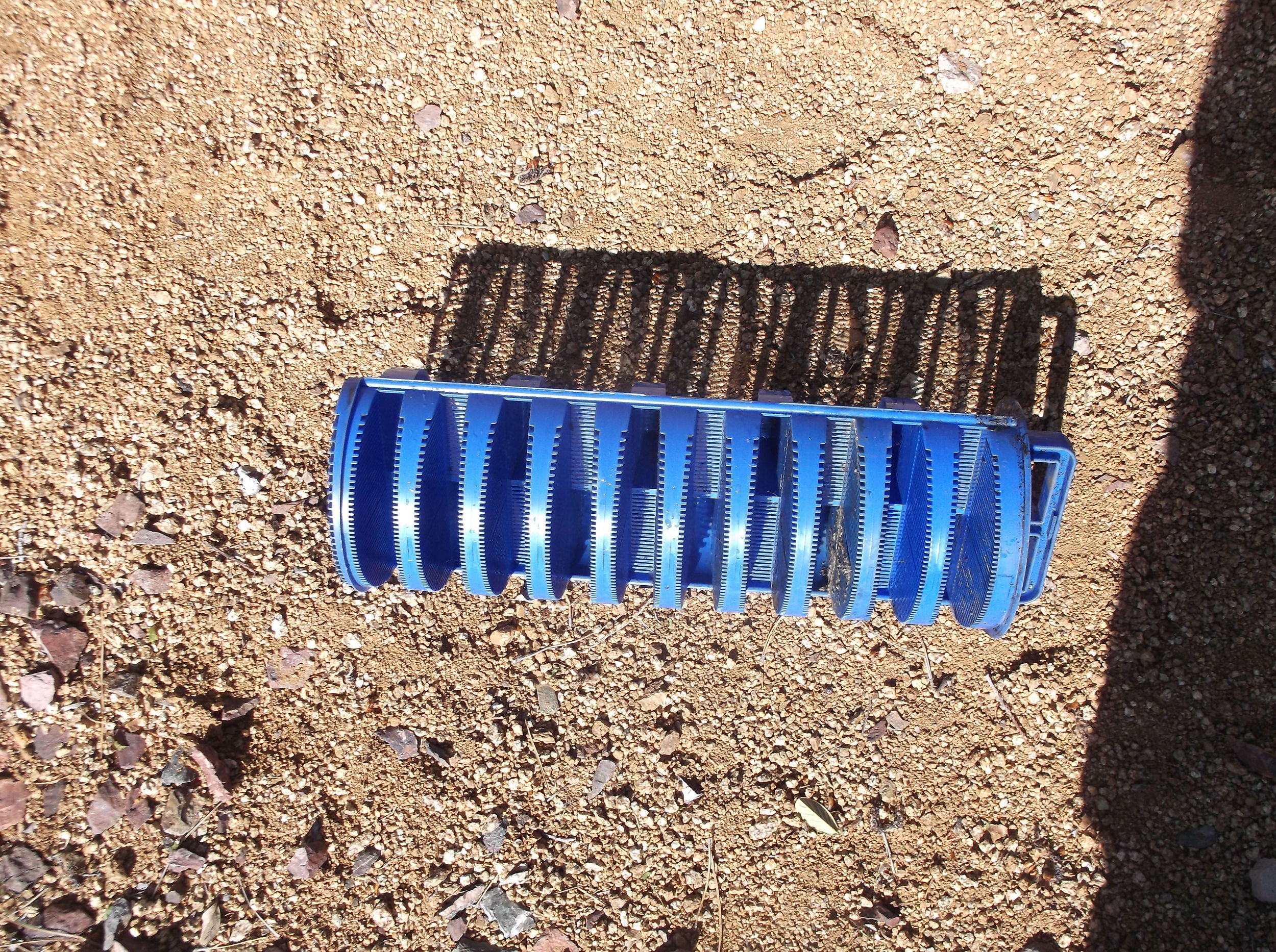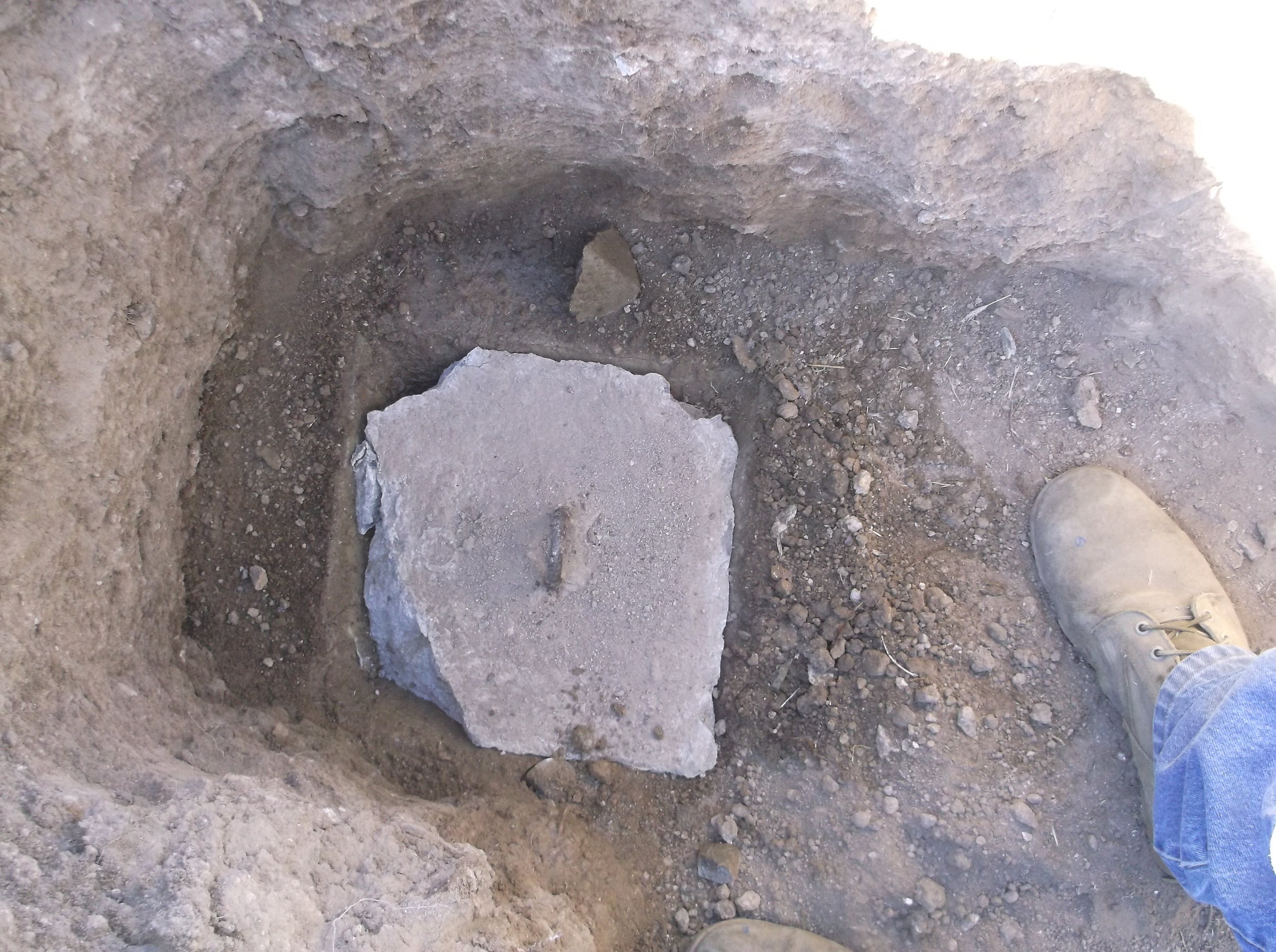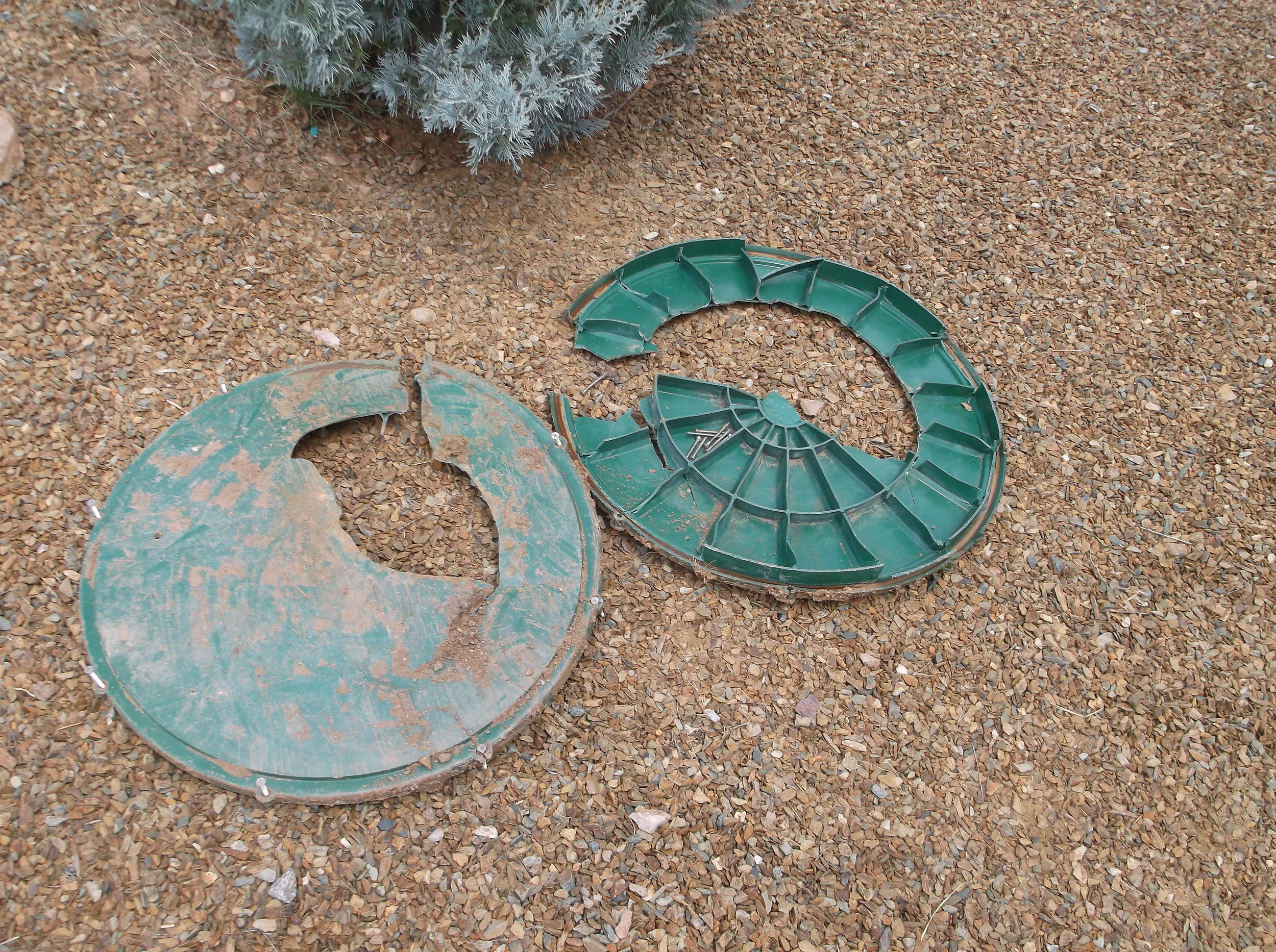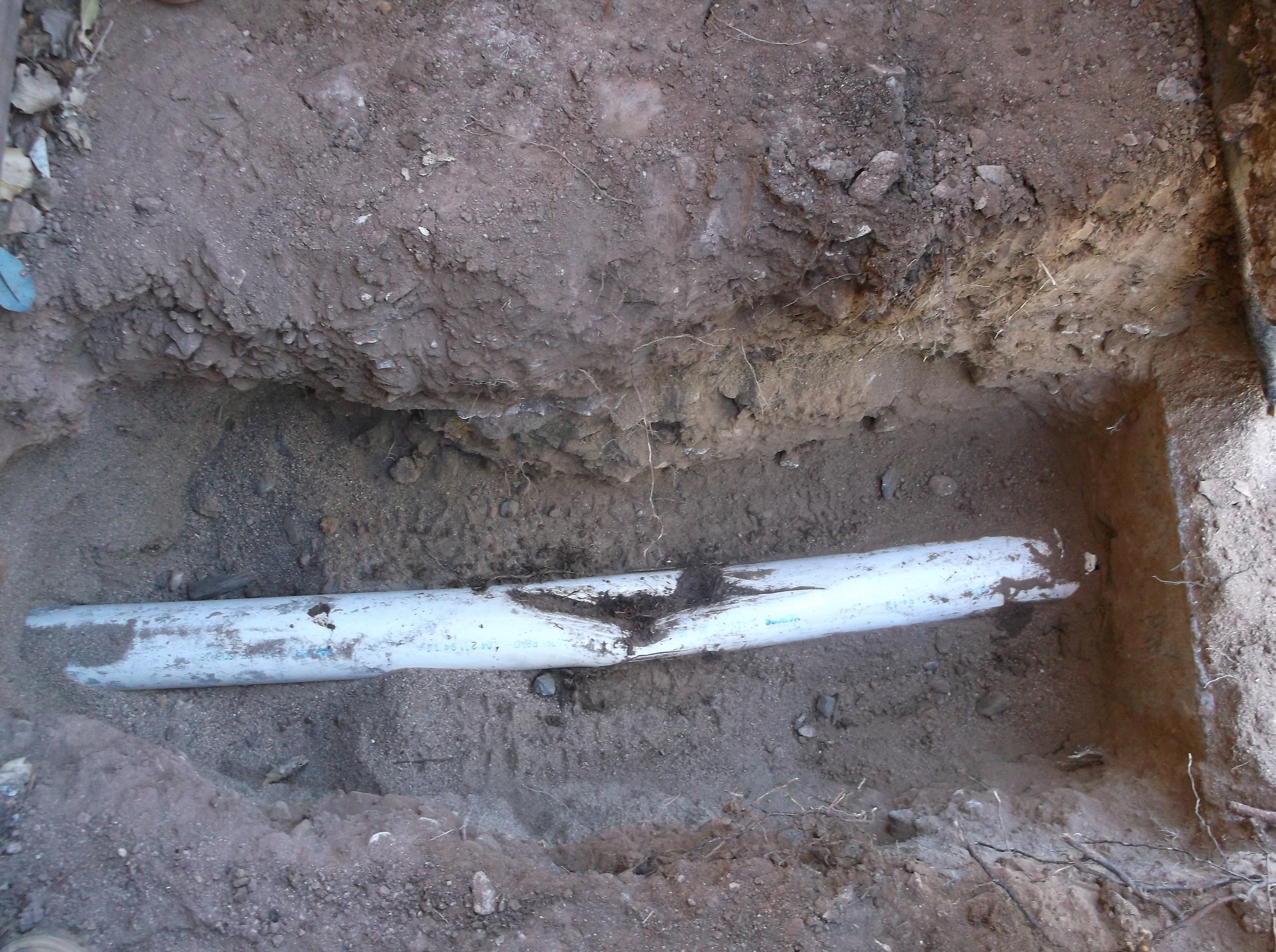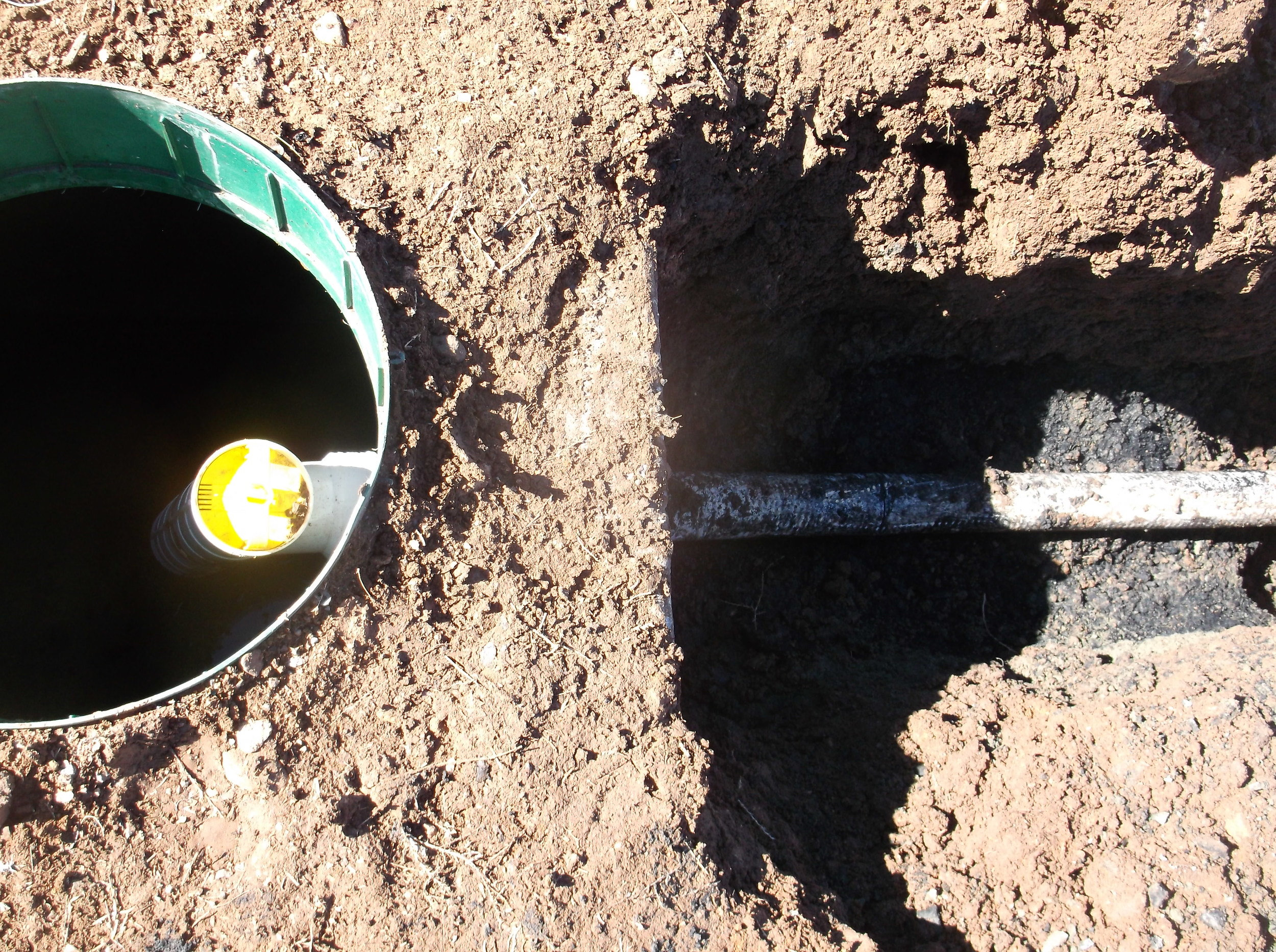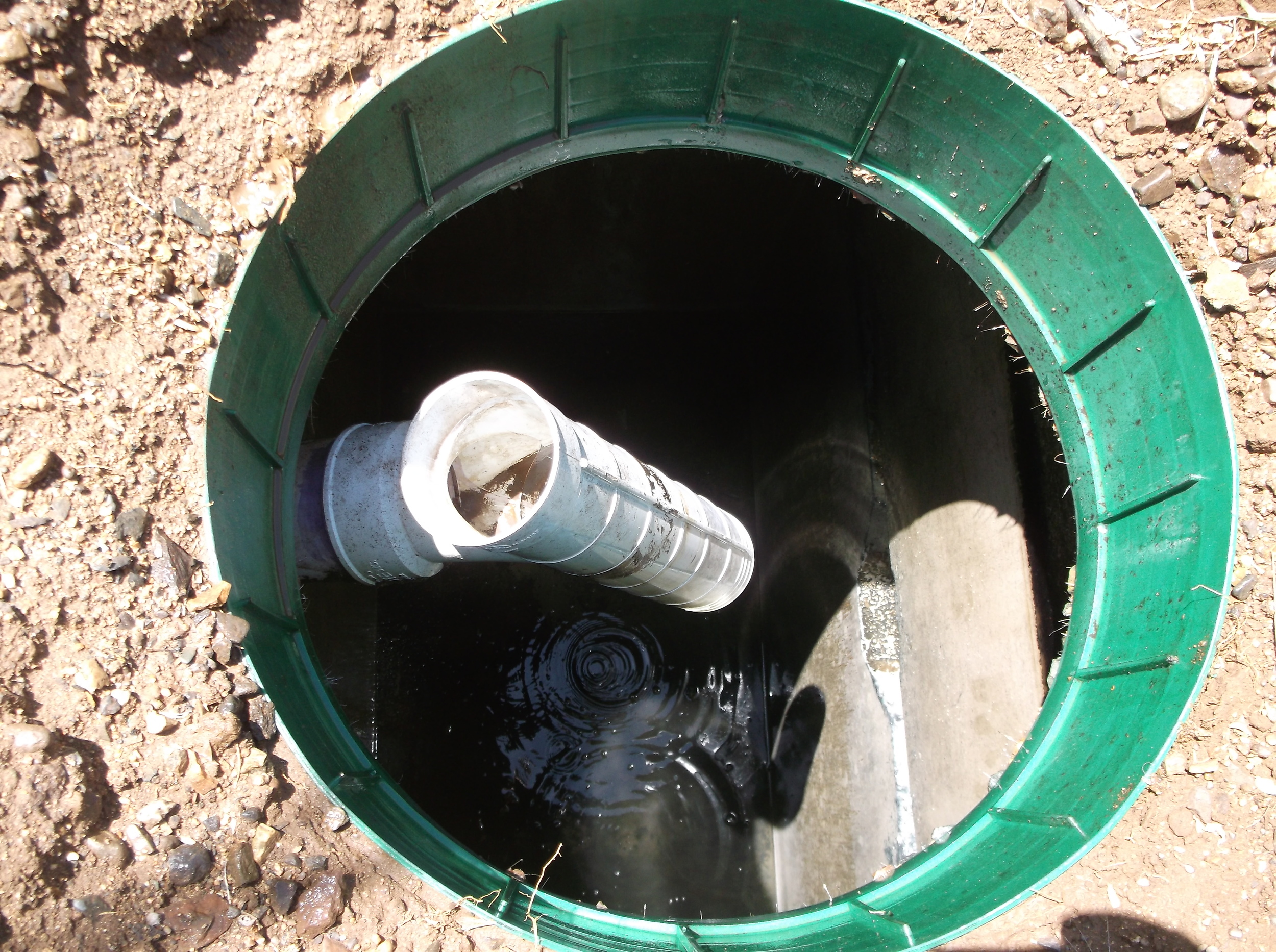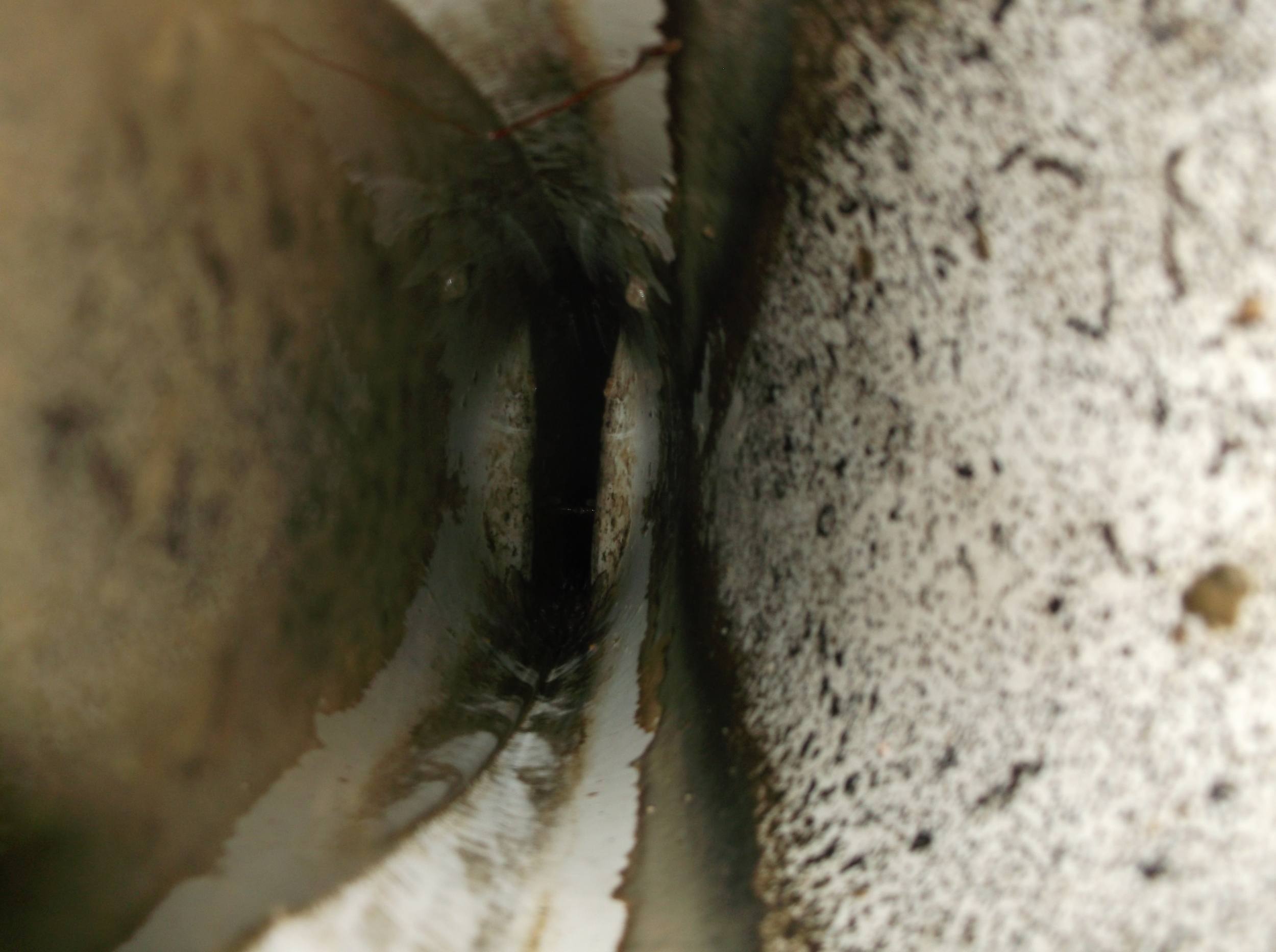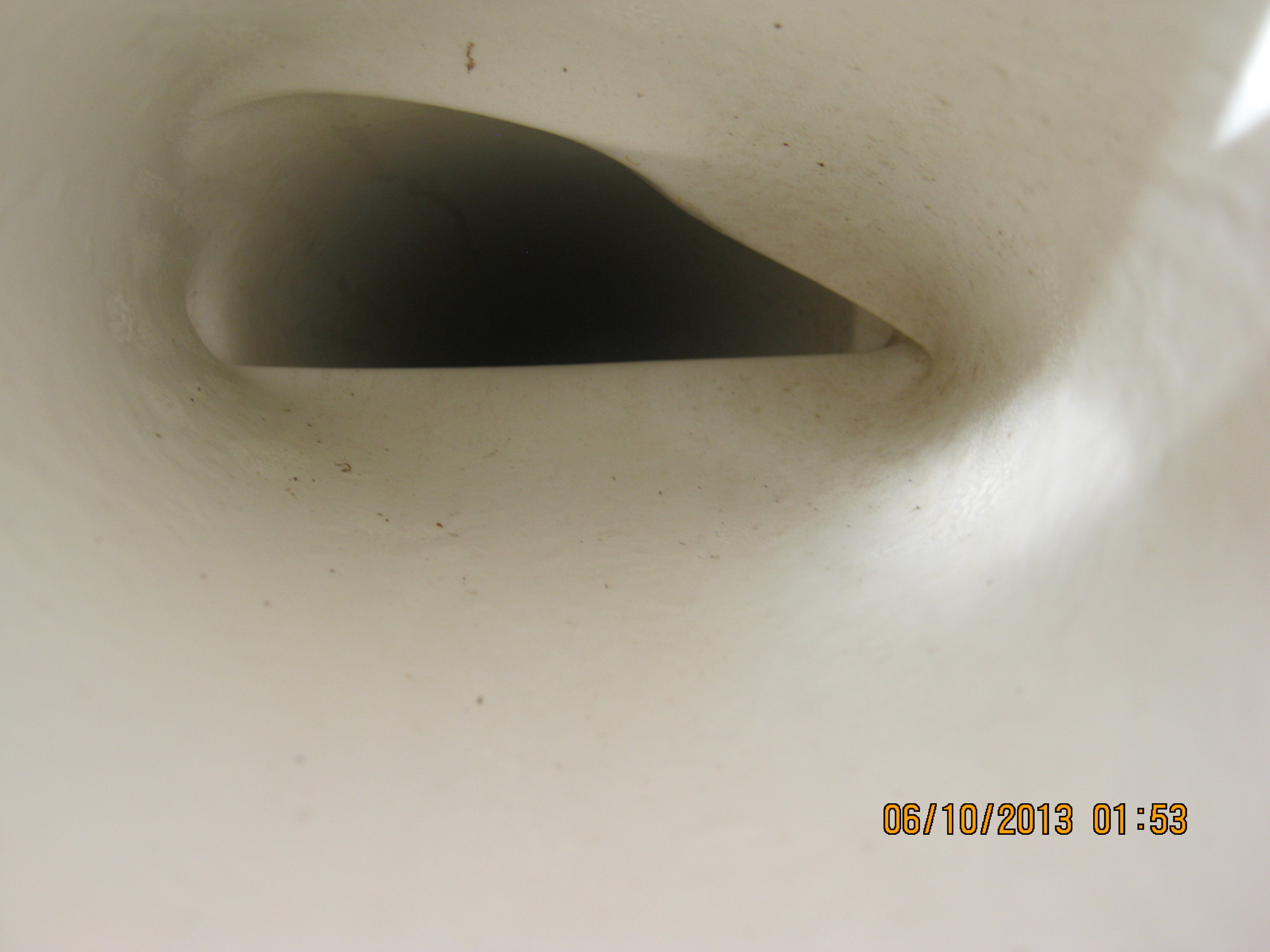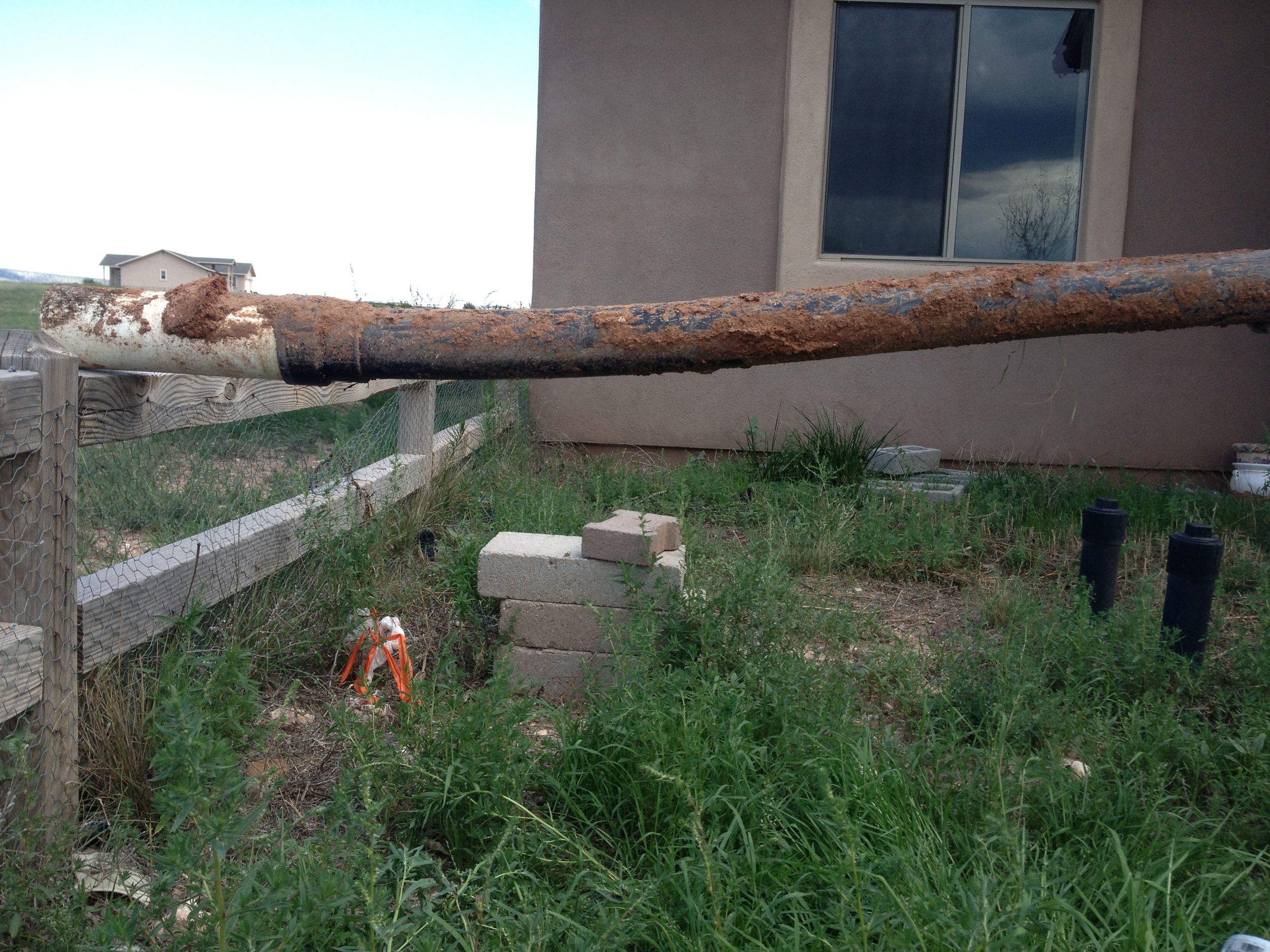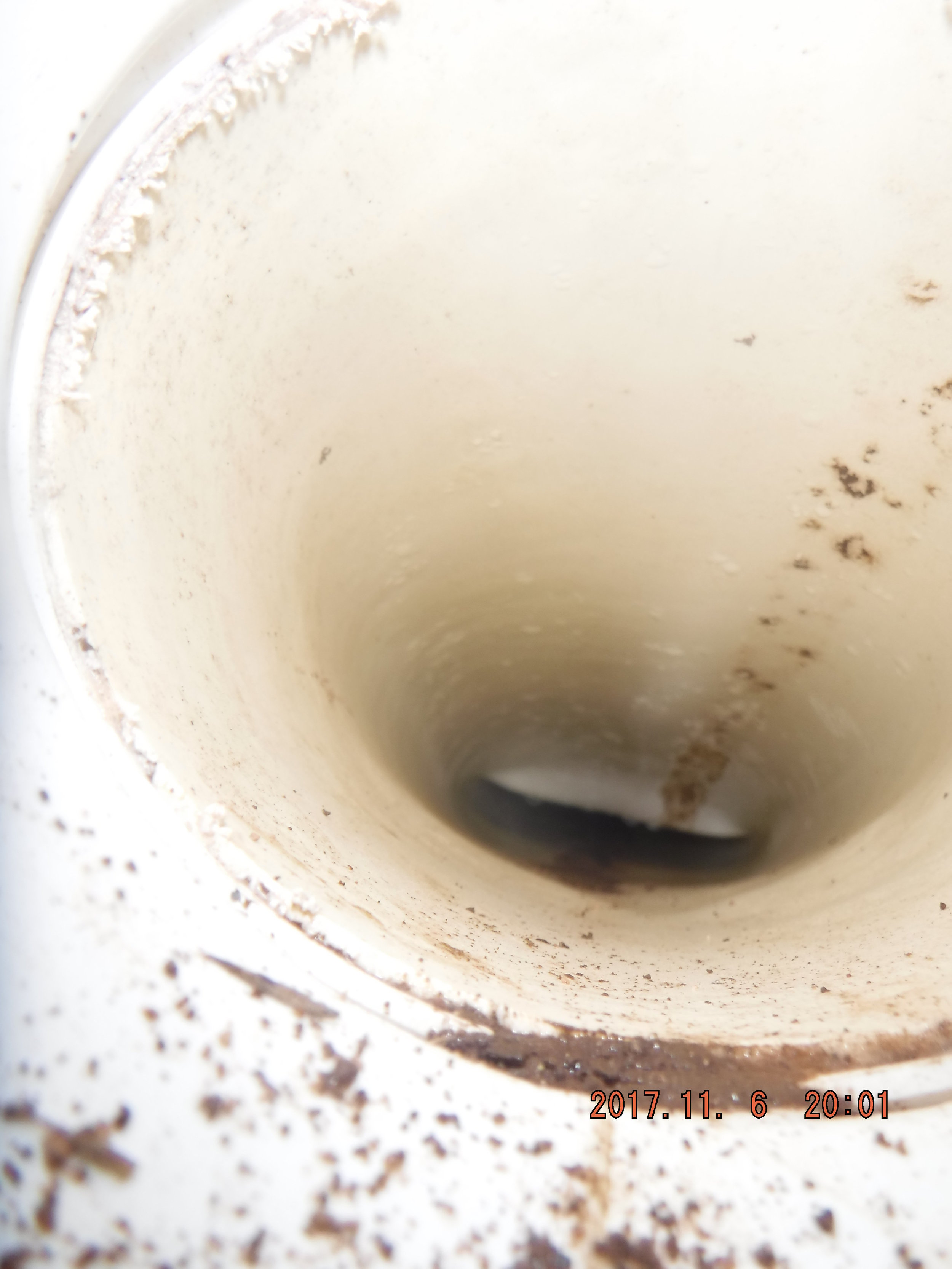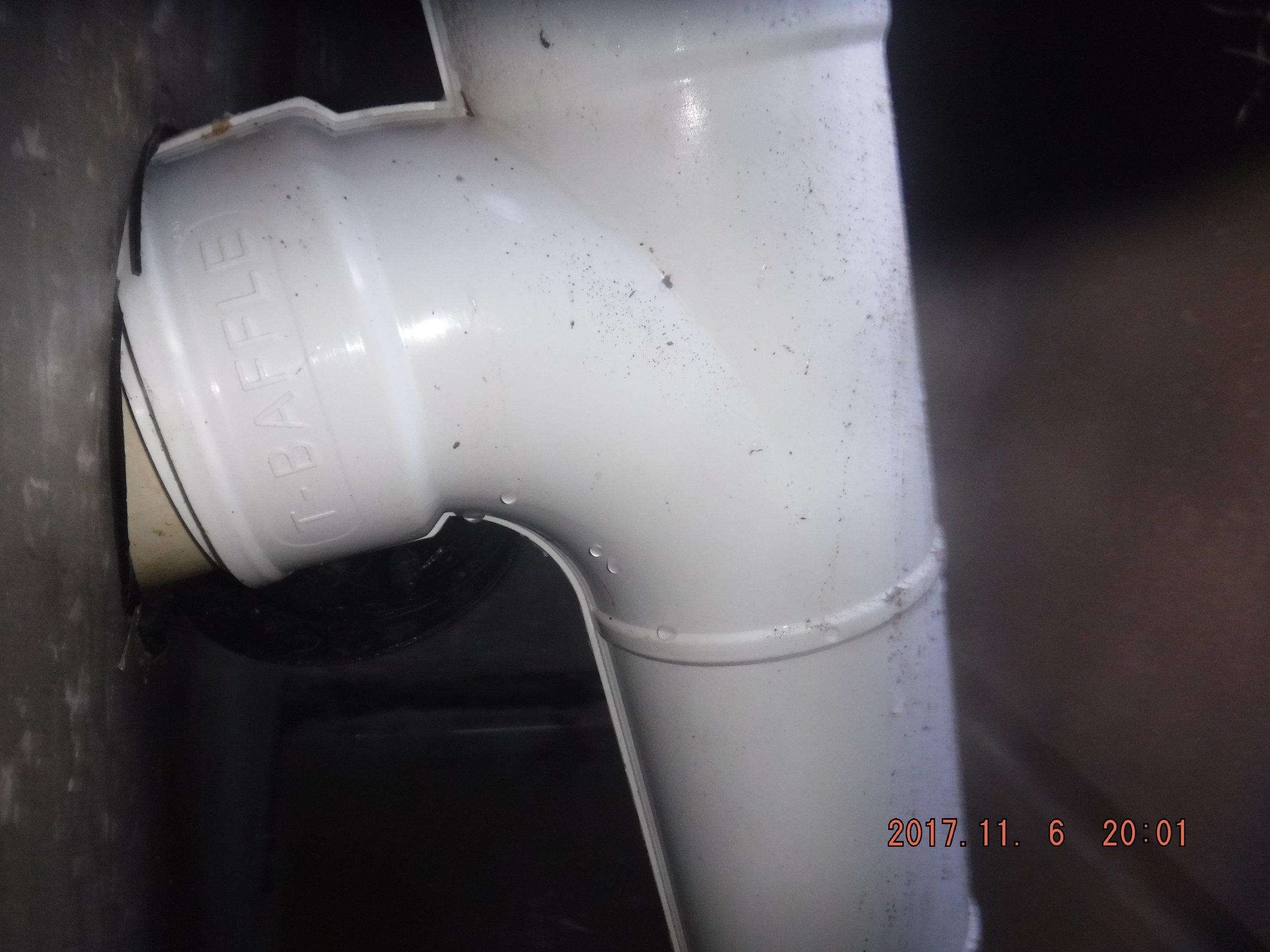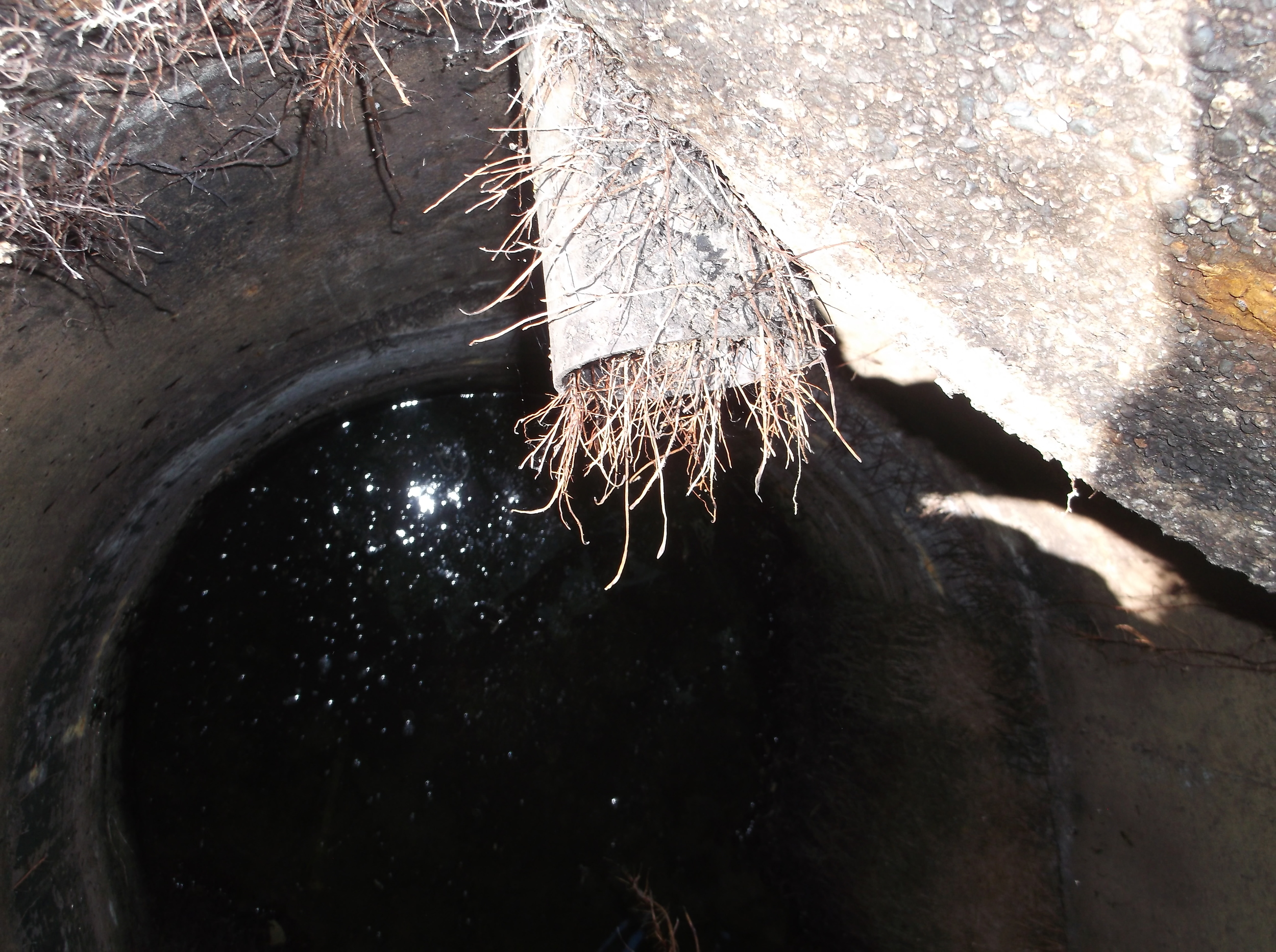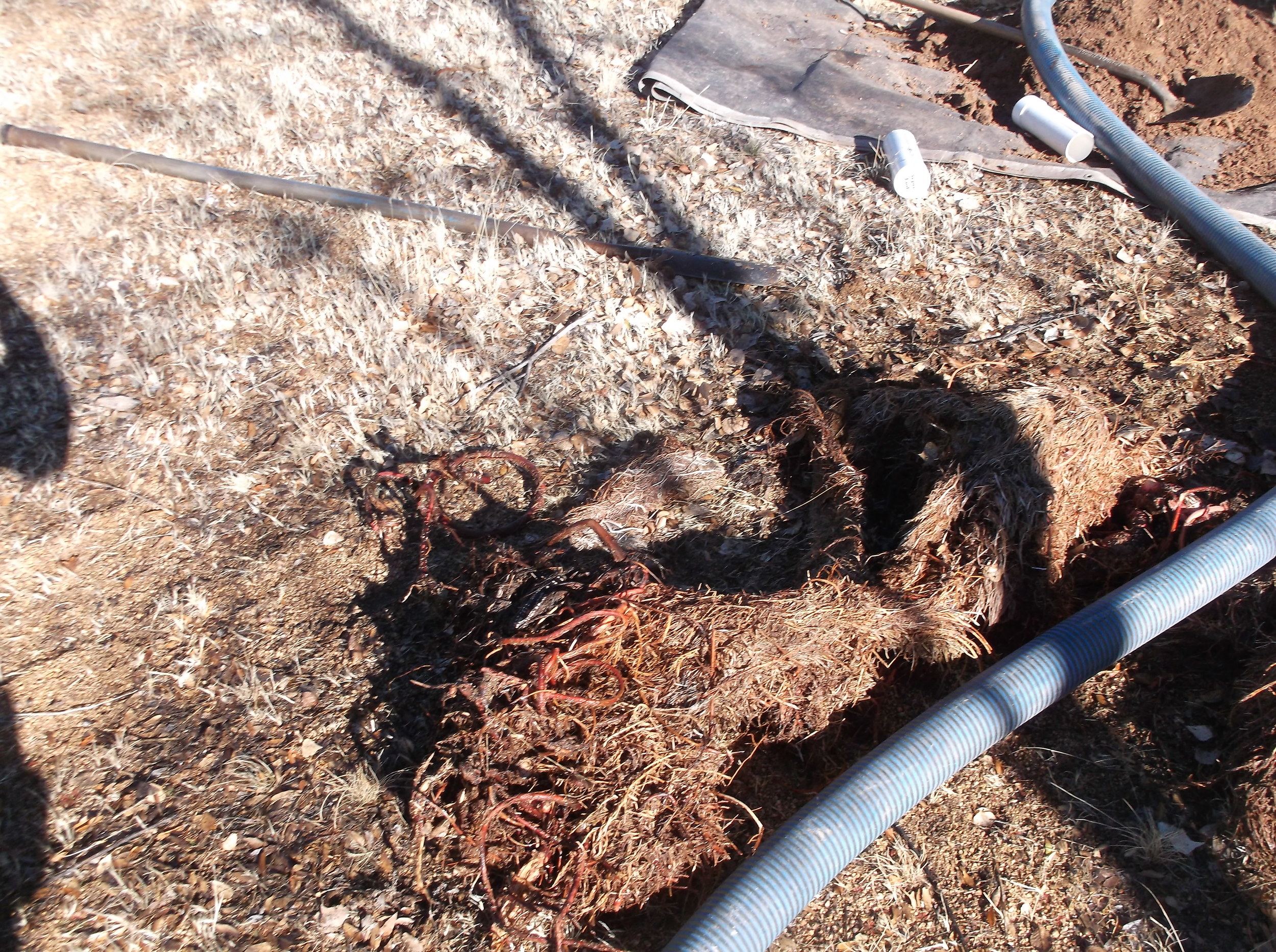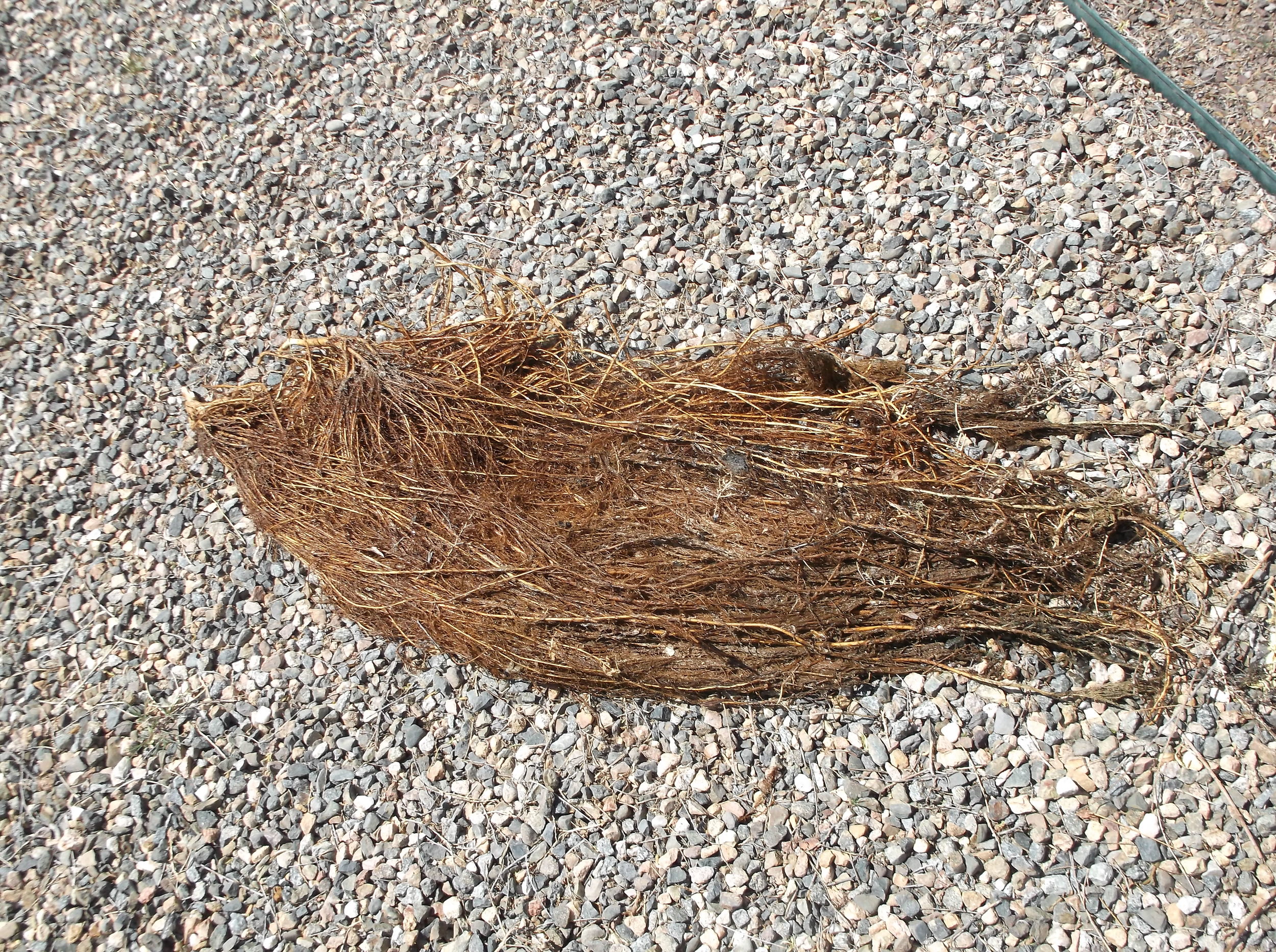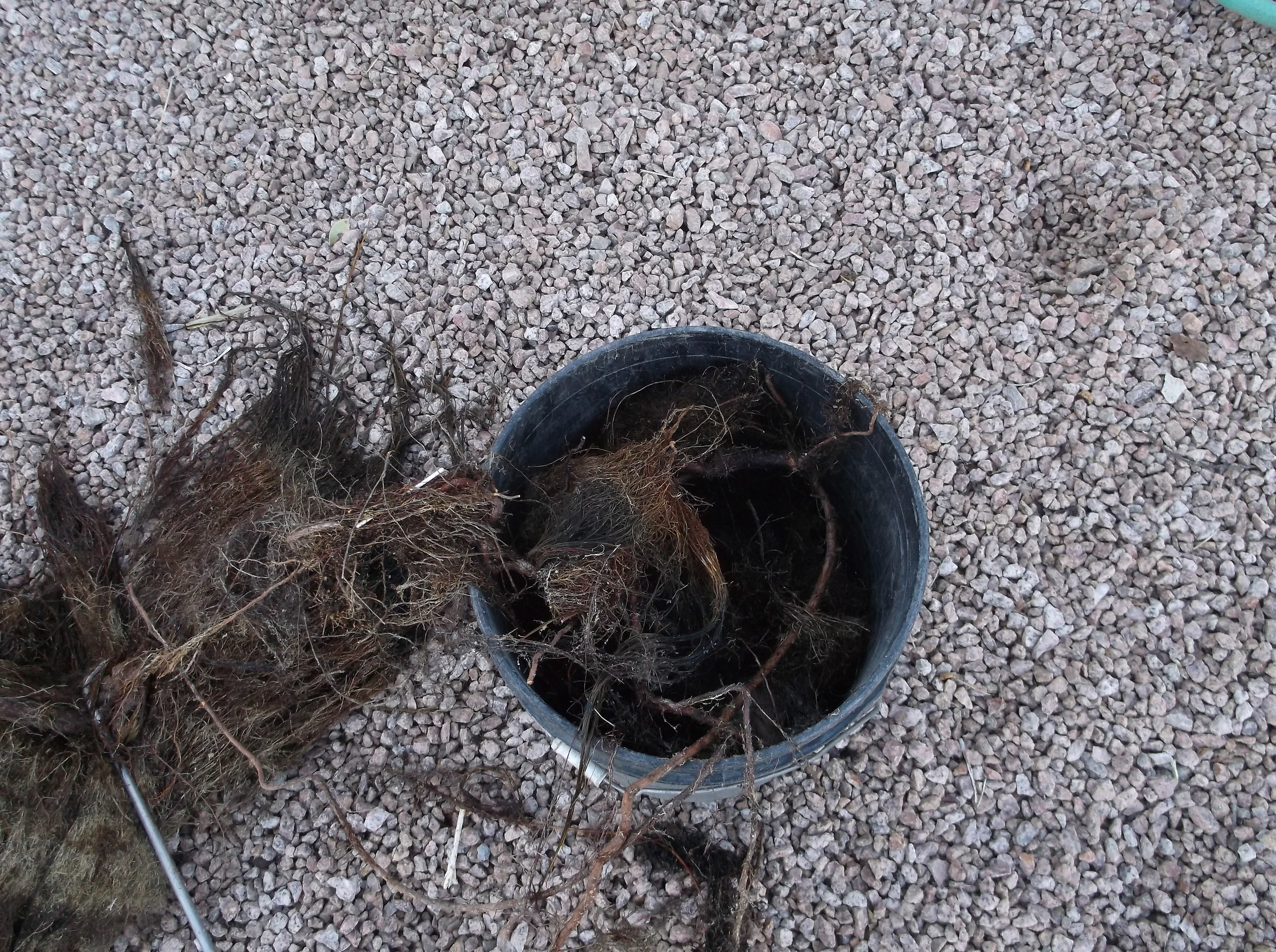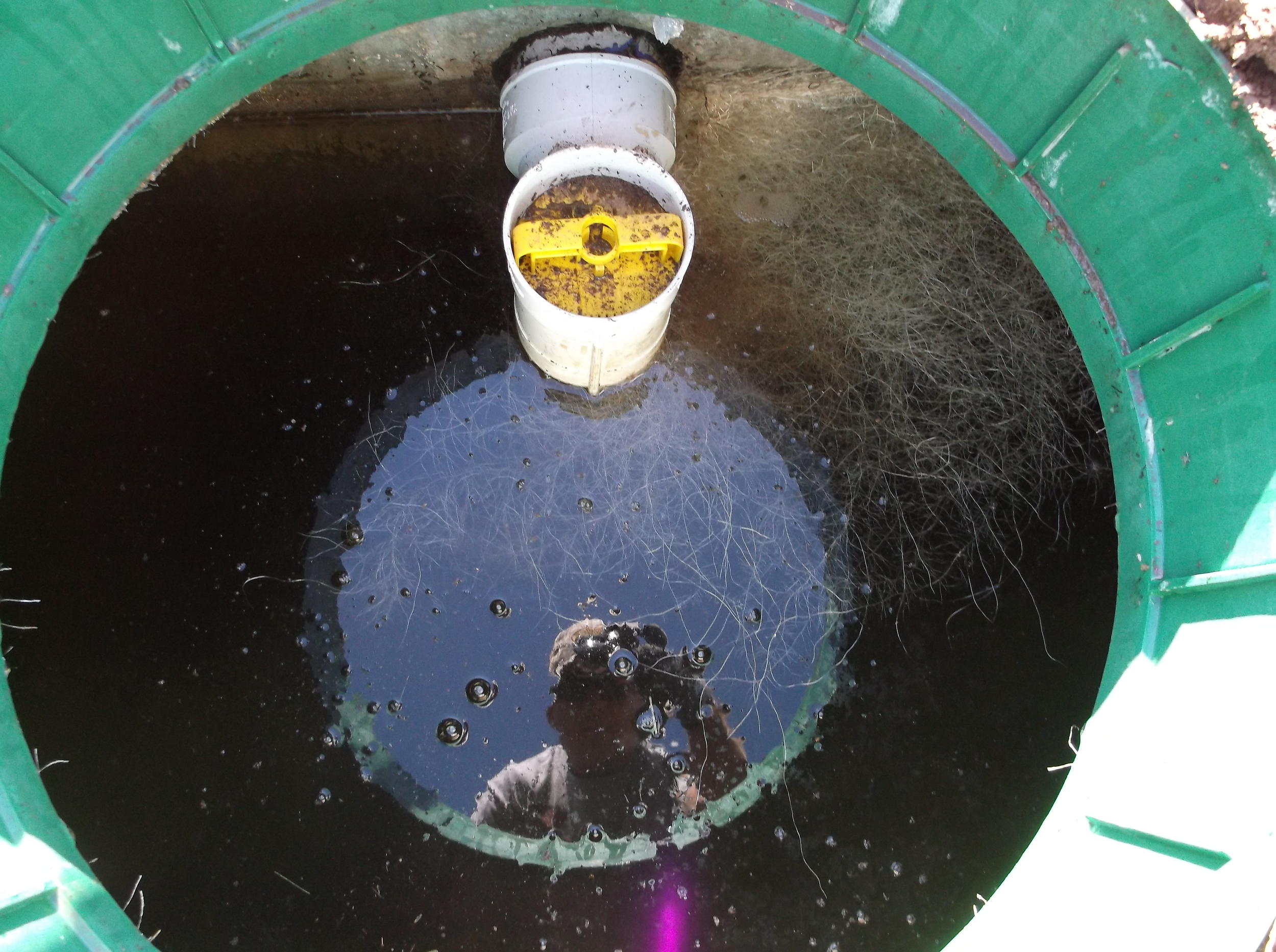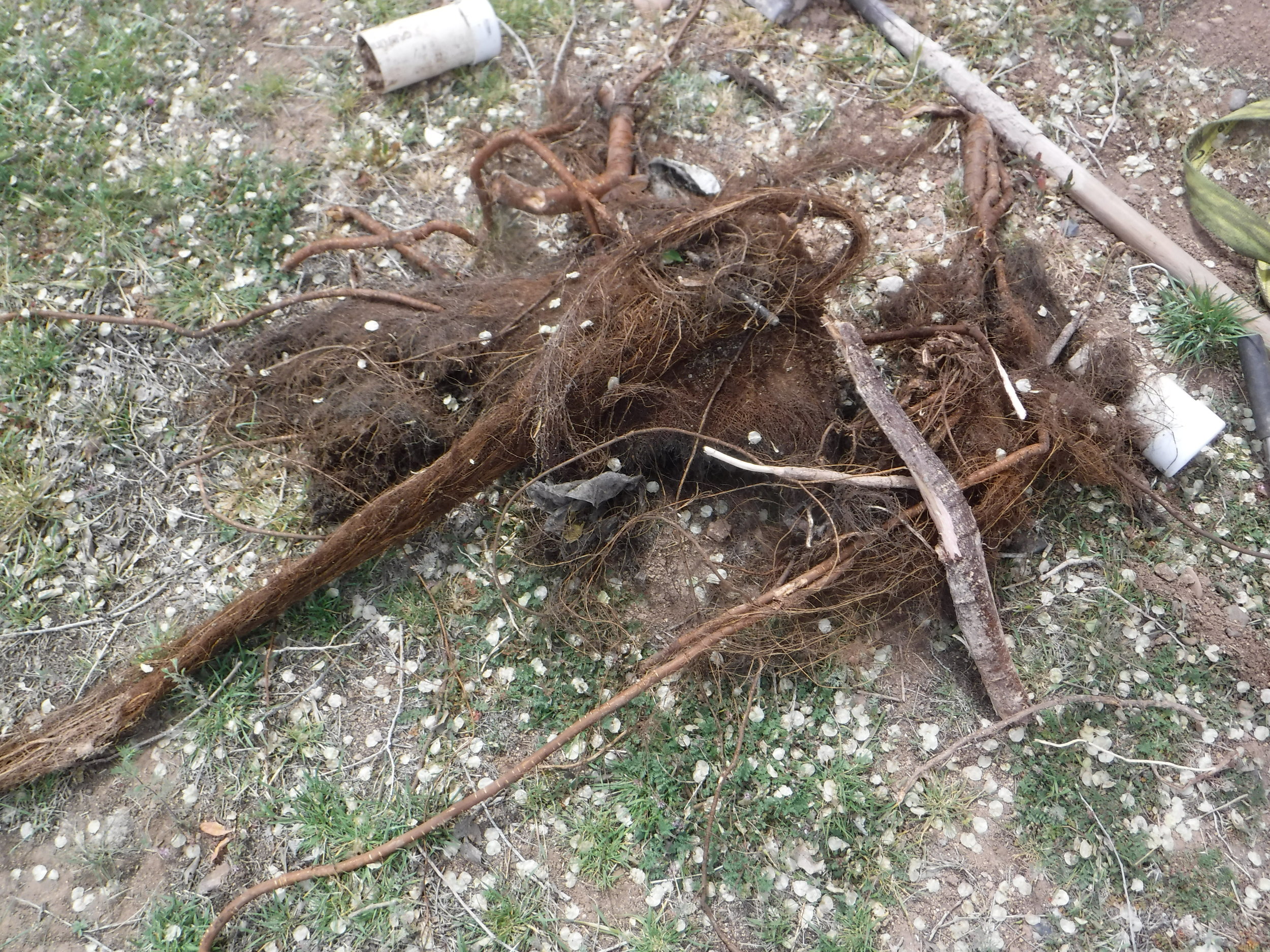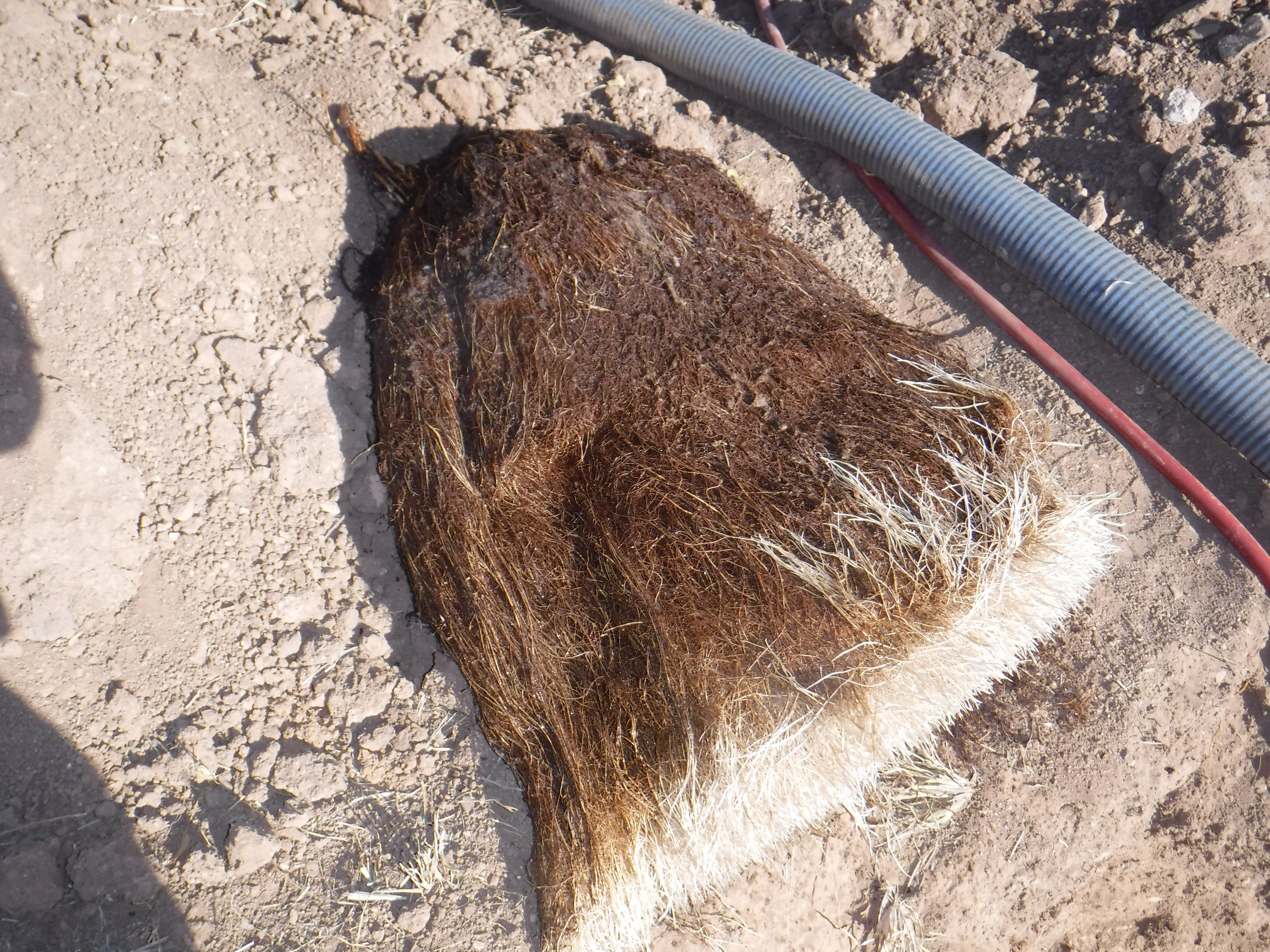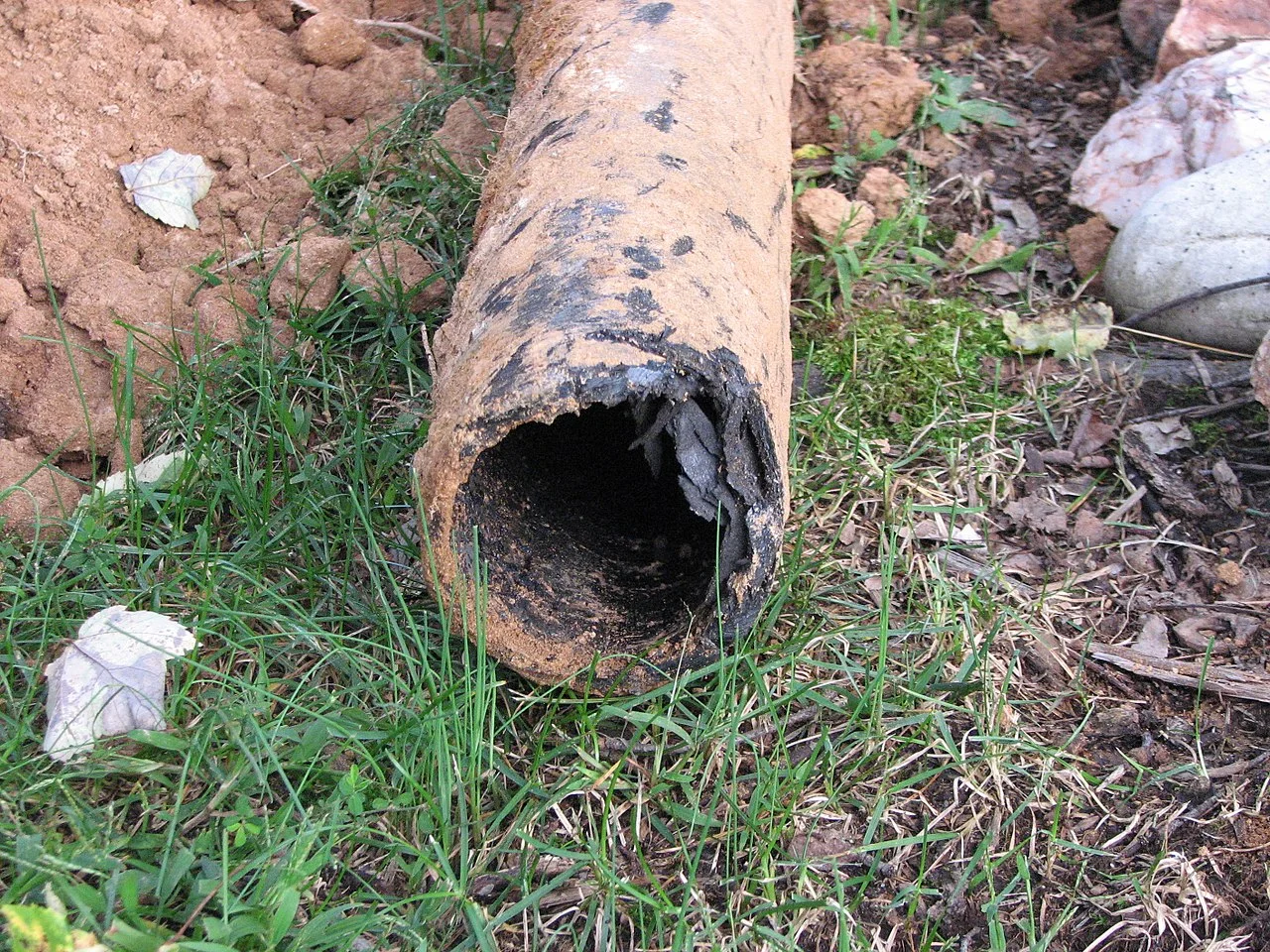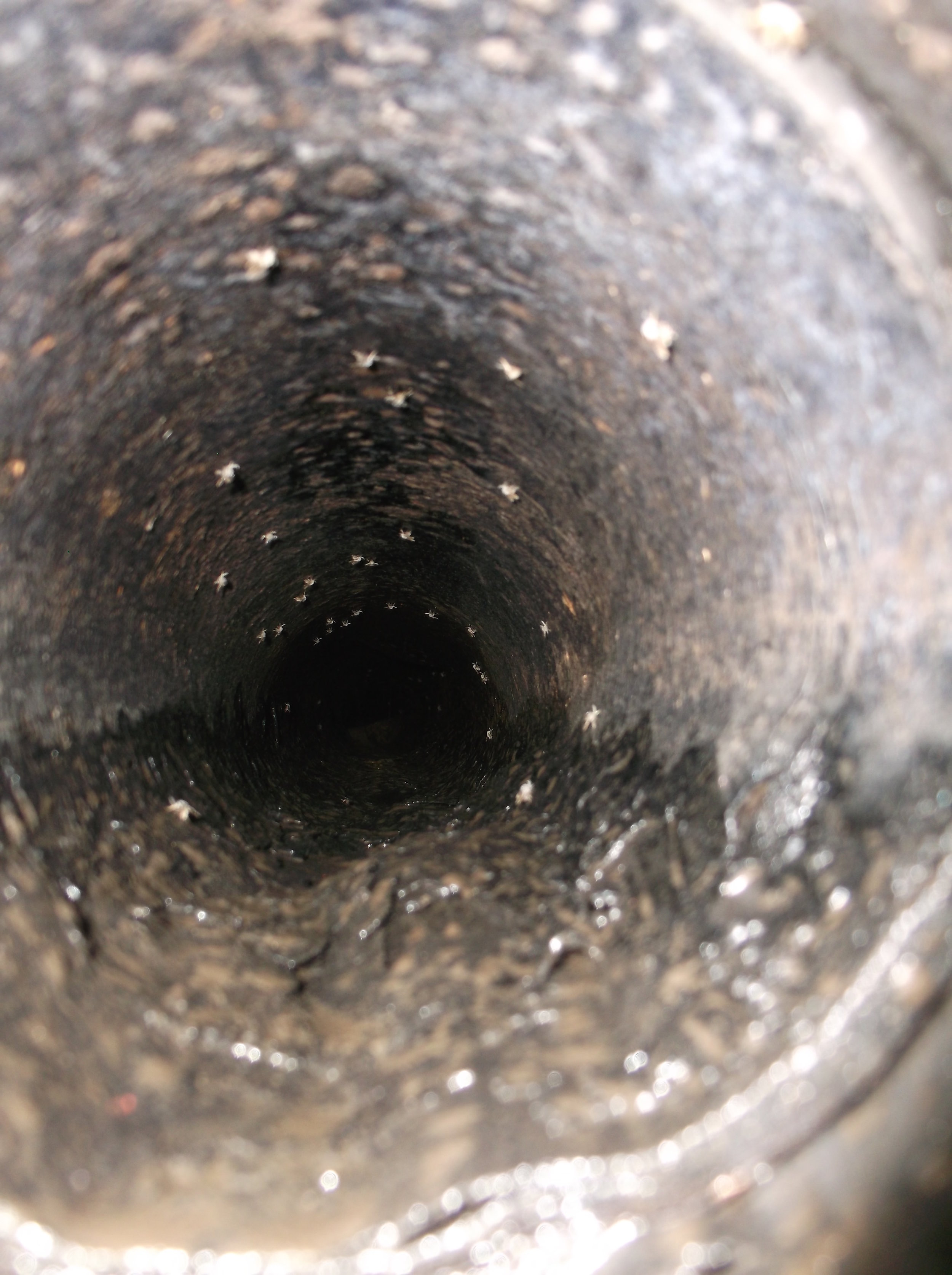are All household fixtures backed up- is it time to clean your filter?
If you hear gurgling and all the house fixtures are blocked, check the sewer cleanout on the outside of the house. This is usually a black 3-4" inch ABS pipe that has a threaded cap. Take the cap off (WATCH OUT! IT MAY PACK SOME PRESSURE!):
If the sewer line is dry, then you have a plug inside the house plumbing, in front of the cleanout. Call a plumber to have them rooter the line. Some rooter/plumbing companies have sewer line cameras. These are nifty for “seeing the problem."
If the water is standing in the pipe or overflows out the cleanout, then you know that the problem is from that point out. At this point you can either call your favorite septic company, or dig up the tank lids yourself and check the water level and solids content in the tank. Most people call the professionals for this step!
Most tanks installed after January 2001 have a filter that needs at least an annual cleaning (we clean filters- Contact us today to set up a filter cleaning. We'll even remind you each year when your filter cleaning is due!). If only one or two fixtures are backed-up, like one toilet or a particular sink or shower, call your favorite plumber. You probably have a clog in the sewer line. If your septic tank is backing up, we're here to help!
dirty filters:
clean filters!:
GURGLES
If a toilet gurgles when flushed, is unusually slow to flush, or brownish colored water fills a shower and then goes down after doing laundry, you are getting a subtle message- there is trouble brewing! Consult your records for when the tank was pumped last, then call your favorite septic company for advice.
ODORS
If you experience foul smells inside the house, like rotten eggs, a trap or vent inside the house is not venting properly. Call your plumber immediately; these gases are toxic to humans and pets!
ODORS OUTSIDE IN THE YARD
Sometimes atmospherics will bring the odors from the roof vents down into the yard. Hire a plumber to raise the roof vents and/or install a charcoal filter to the vent. Remember that your septic tank is vented through the roof vents!
SURFACING IN THE YARD
If you have effluent surfacing in the yard call your septic company immediately. This is a symptom of leach line failure and needs immediate attention.
HEAVY SOLIDS- OVERDUE FOR PUMPING
Contrary to popular belief, you DO need to pump your septic tank periodically. If you do not have proper pumping maintenance done, your system will become overloaded with solid waste and eventually ruin your leach lines.
DON'T LET THIS BE YOU!
This is an extreme case of an overfull tank. Sewage is coming out of the tank access openings and spilling into the yard!
grease build up in sewer pipes
Fats & grease should never be poured down the drain. They can solidify the lines & cause failure; they can cause excessive buildup of the floating scum layer in the septic tank; and they can get into the disposal area & surrounding soil & seal the system off altogether.
crushed or damaged lids
A broken lid can be a severe danger to animals and children. It is possible for them to fall through the cracked or damaged lids and not be heard until it's too late. To replace your lids, contact us.
crushed or settled pipe
SEWER INLET PROGRESSION
This is the second most common problem we see in newer septic systems. As the loose fill dirt around the tank settles, it pulls the pipe with it and causes flow to be obstructed and developing backups into the house. We even see that sometimes contractors who install new systems do not pack the fill dirt properly below the pipe causing pipe settlement on systems that have not even been used or just been used for a short period of time (see below for an example). Be sure that if you are installing new sewer pipe, you use industry standard sewer pipe material such as SDR-35 or Schedule 40.
SEWER OUTLET PROGRESSION
This is the most common problem we see in newer septic systems. Notice that the unsupported outlet pipe is pushed down by the settling soil. Watch the water level rise in the tank causing water to slow in the inlet sewer line. This will eventually cause an obstruction at the inlet sewer pipe. High water level will not let the solids coming down from the house enter the tank properly.
examples of settled sewer pipes:
“POLY” PIPE
IMAGES ABOVE ARE A GOOD EXAMPLE OF WHAT PIPE NOT TO USE WHEN INSTALLING A TANK AND/OR REPAIRING SEWER PIPES. ALTHOUGH THIS GRADE OF SEWER PIPE IS LESS EXPENSIVE AT TIME OF PURCHASE, IT CAN COST YOU BIG BUCKS IN THE LONG RUN!
settled inlet sewer pipe on unused system:
Even if the septic system has not been used, it is possible for concerns to be found during an inspection. Pipes can settle on vacant land and in yards due to improper installation and/or vehicles and/or ATVs unknowingly driving over the pipes. Although the County may not require an inspection on an unused system for transfer of ownership, it may benefit all parties to have a qualified inspector take a look at the system and diagnose any issues.
Roots growing in and around the septic tank:
Tree roots can wreak havoc on the system by blocking or even breaking drainage and distribution pipes, and they can sometimes even penetrate the tank. Among the symptoms that can alert your to root problems are foul odors, poor drainage and patches of greenery in the leach field.
ERODED BAFFLES
Concrete baffles help keep solids in the septic tank and out of the disposal area. Baffles help prevent damage to the drainfield by reducing effluent agitation as sewage enters the septic tank and by preventing solids from flowing out of the tank into the drainfield. If the baffles are damaged, missing or were never installed, the life of the drainfield will be shortened. Baffle repair typically includes the installation of a plastic tee onto the end of the sewer pipes.
orangeburg sewer pipes
From 1860-1970, Orangeburg pipe was manufactured in Orangeburg, NY, and used to plumb in many septic and sewer systems around Yavapai County. Orangeburg pipe is made from rolled tar paper (wood pulp sealed with hot pitch) and was considered a low cost alternative to metal, especially post-World War II. During install, the pipe itself is so soft, tradesmen could cut it with a knife! After the mid-70s, Orangeburg was replaced by standard ABS increasing pipe's longevity and durability; Orangeburg is notorious for degrading over time (with a 50-yaer lifespan, at best) and deforming from pressure. Over time, the deformed pipe becomes "egg-shaped" and will start to blister and eventually fall apart. If the septic system is permitted, typically Orangeburg will be listed on the permits as the inlet and/or outlet pipe material.
For more information on Orangeburg, schedule a visit today or read the article on azcentral.com for information on how Orangeburg has impacted Valley area homes.



